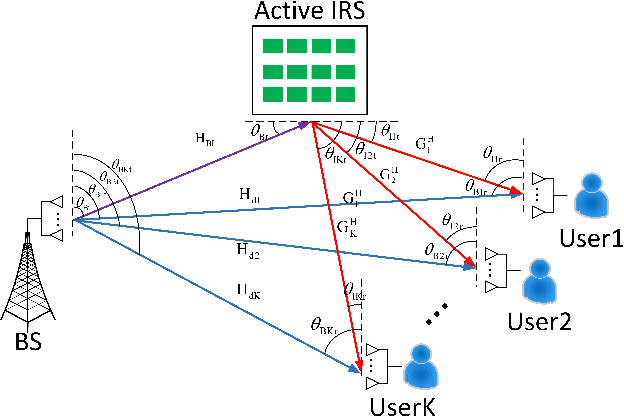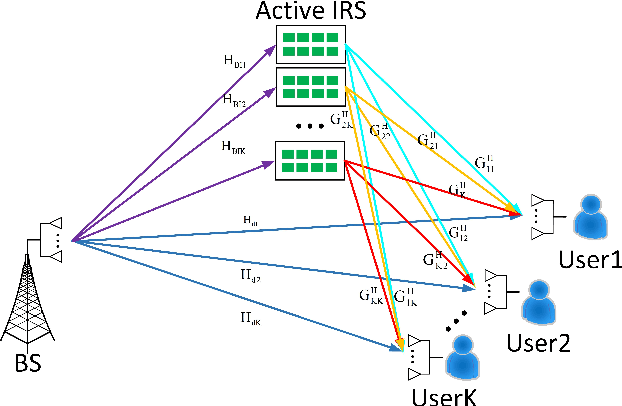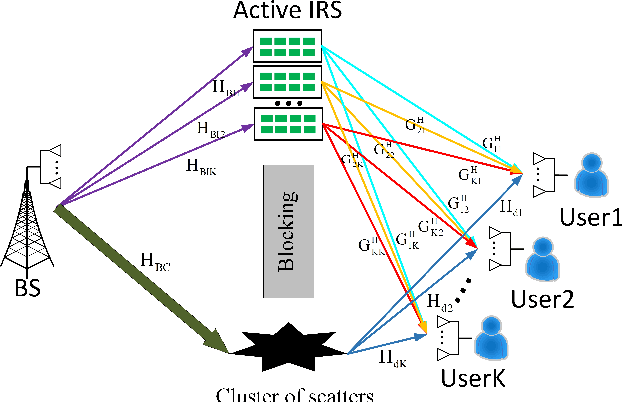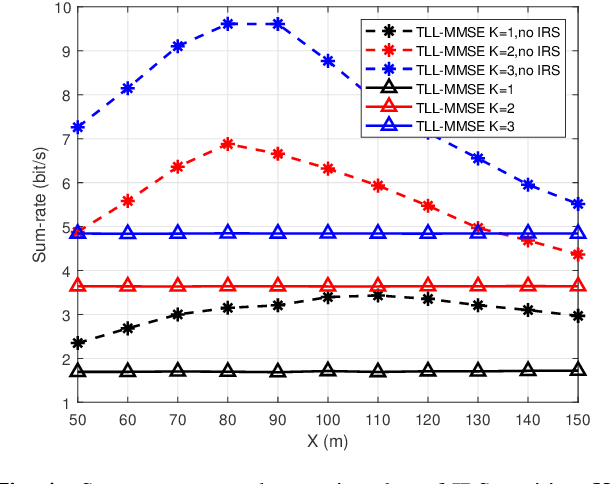Dongming Wang
NeRF-VIO: Map-Based Visual-Inertial Odometry with Initialization Leveraging Neural Radiance Fields
Mar 11, 2025Abstract:A prior map serves as a foundational reference for localization in context-aware applications such as augmented reality (AR). Providing valuable contextual information about the environment, the prior map is a vital tool for mitigating drift. In this paper, we propose a map-based visual-inertial localization algorithm (NeRF-VIO) with initialization using neural radiance fields (NeRF). Our algorithm utilizes a multilayer perceptron model and redefines the loss function as the geodesic distance on \(SE(3)\), ensuring the invariance of the initialization model under a frame change within \(\mathfrak{se}(3)\). The evaluation demonstrates that our model outperforms existing NeRF-based initialization solution in both accuracy and efficiency. By integrating a two-stage update mechanism within a multi-state constraint Kalman filter (MSCKF) framework, the state of NeRF-VIO is constrained by both captured images from an onboard camera and rendered images from a pre-trained NeRF model. The proposed algorithm is validated using a real-world AR dataset, the results indicate that our two-stage update pipeline outperforms MSCKF across all data sequences.
A Framework for Uplink ISAC Receiver Designs: Performance Analysis and Algorithm Development
Mar 04, 2025Abstract:Uplink integrated sensing and communication (ISAC) systems have recently emerged as a promising research direction, enabling simultaneous uplink signal detection and target sensing. In this paper, we propose flexible projection (FP)-type receivers that unify the projection-type receivers and the successive interference cancellation (SIC)-type receivers by using a flexible tradeoff factor to adapt to dynamically changing uplink ISAC scenarios. The FP-type receivers address the joint signal detection and target response estimation problem through two coordinated phases: 1) Communication signal detection using a reconstructed signal whose composition is controlled by the tradeoff factor, followed by 2) Target response estimation performed through subtraction of the detected communication signal from the received signal. With adjustable tradeoff factors, the FP-type receivers can balance the enhancement of the signal-to-interference-plus-noise ratio (SINR) with the reduction of correlation in the reconstructed signal for communication signal detection. The pairwise error probabilities (PEPs) are analyzed for both maximum likelihood (ML) and zero-forcing (ZF) detectors, revealing that the optimal tradeoff factor should be determined based on the adopted detection algorithm and the relative power of the sensing and communication (S&C) signal. A homotopy optimization framework is first applied for the FP-type receivers with a fixed trade-off factor. This framework is then extended to develop dynamic FP (DFP)-type receivers, which iteratively adjust the trade-off factor for improved algorithm performance and environmental adaptability. Subsequently, two extensions are explored to further enhance the receivers' performance: parallel DFP (PDFP)-type receivers and a block-structured receiver design. Finally, the effectiveness of the proposed receiver designs is verified via simulations.
Two-Timescale Design for AP Mode Selection of Cooperative ISAC Networks
Dec 29, 2024



Abstract:As an emerging technology, cooperative bi-static integrated sensing and communication (ISAC) is promising to achieve high-precision sensing, high-rate communication as well as self-interference (SI) avoidance. This paper investigates the two-timescale design for access point (AP) mode selection to realize the full potential of the cooperative bi-static ISAC network with low system overhead, where the beamforming at the APs is adapted to the rapidly-changing instantaneous channel state information (CSI), while the AP mode is adapted to the slowly-changing statistical CSI. We first apply the minimum mean square error (MMSE) estimator to estimate the channel between the APs and the channels from the APs to the user equipments (UEs). Then we adopt the low-complexity maximum ratio transmission (MRT) beamforming and the maximum ratio combining (MRC) detector, and derive the closed-form expressions of the communication rate and the sensing signal-to-interference-plus-noise-ratio (SINR). We formulate a non-convex integer optimization problem to maximize the minimum sensing SINR under the communication quality of service (QoS) constraints. McCormick envelope relaxation and successive convex approximation (SCA) techniques are applied to solve the challenging non-convex integer optimization problem. Simulation results validate the closed-form expressions and prove the convergence and effectiveness of the proposed AP mode selection scheme.
Cooperative ISAC-empowered Low-Altitude Economy
Dec 29, 2024Abstract:This paper proposes a cooperative integrated sensing and communication (ISAC) scheme for the low-altitude sensing scenario, aiming at estimating the parameters of the unmanned aerial vehicles (UAVs) and enhancing the sensing performance via cooperation. The proposed scheme consists of two stages. In Stage I, we formulate the monostatic parameter estimation problem via using a tensor decomposition model. By leveraging the Vandermonde structure of the factor matrix, a spatial smoothing tensor decomposition scheme is introduced to estimate the UAVs' parameters. To further reduce the computational complexity, we design a reduced-dimensional (RD) angle of arrival (AoA) estimation algorithm based on generalized Rayleigh quotient (GRQ). In Stage II, the positions and true velocities of the UAVs are determined through the data fusion across multiple base stations (BSs). Specifically, we first develop a false removing minimum spanning tree (MST)-based data association method to accurately match the BSs' parameter estimations to the same UAV. Then, a Pareto optimality method and a residual weighting scheme are developed to facilitate the position and velocity estimation, respectively. We further extend our approach to the dual-polarized system. Simulation results validate the effectiveness of the proposed schemes in comparison to the conventional techniques.
Distributed satellite information networks: Architecture, enabling technologies, and trends
Dec 17, 2024



Abstract:Driven by the vision of ubiquitous connectivity and wireless intelligence, the evolution of ultra-dense constellation-based satellite-integrated Internet is underway, now taking preliminary shape. Nevertheless, the entrenched institutional silos and limited, nonrenewable heterogeneous network resources leave current satellite systems struggling to accommodate the escalating demands of next-generation intelligent applications. In this context, the distributed satellite information networks (DSIN), exemplified by the cohesive clustered satellites system, have emerged as an innovative architecture, bridging information gaps across diverse satellite systems, such as communication, navigation, and remote sensing, and establishing a unified, open information network paradigm to support resilient space information services. This survey first provides a profound discussion about innovative network architectures of DSIN, encompassing distributed regenerative satellite network architecture, distributed satellite computing network architecture, and reconfigurable satellite formation flying, to enable flexible and scalable communication, computing and control. The DSIN faces challenges from network heterogeneity, unpredictable channel dynamics, sparse resources, and decentralized collaboration frameworks. To address these issues, a series of enabling technologies is identified, including channel modeling and estimation, cloud-native distributed MIMO cooperation, grant-free massive access, network routing, and the proper combination of all these diversity techniques. Furthermore, to heighten the overall resource efficiency, the cross-layer optimization techniques are further developed to meet upper-layer deterministic, adaptive and secure information services requirements. In addition, emerging research directions and new opportunities are highlighted on the way to achieving the DSIN vision.
Access Point Deployment for Localizing Accuracy and User Rate in Cell-Free Systems
Dec 10, 2024



Abstract:Evolving next-generation mobile networks is designed to provide ubiquitous coverage and networked sensing. With utility of multi-view sensing and multi-node joint transmission, cell-free is a promising technique to realize this prospect. This paper aims to tackle the problem of access point (AP) deployment in cell-free systems to balance the sensing accuracy and user rate. By merging the D-optimality with Euclidean criterion, a novel integrated metric is proposed to be the objective function for both max-sum and max-min problems, which respectively guarantee the overall and lowest performance in multi-user communication and target tracking scenario. To solve the corresponding high dimensional non-convex multi-objective problem, the Soft actor-critic (SAC) is utilized to avoid risk of local optimal result. Numerical results demonstrate that proposed SAC-based APs deployment method achieves $20\%$ of overall performance and $120\%$ of lowest performance.
DoF Analysis and Beamforming Design for Active IRS-aided Multi-user MIMO Wireless Communication in Rank-deficient Channels
Nov 13, 2024



Abstract:Due to its ability of significantly improving data rate, intelligent reflecting surface (IRS) will be a potential crucial technique for the future generation wireless networks like 6G. In this paper, we will focus on the analysis of degree of freedom (DoF) in IRS-aided multi-user MIMO network. Firstly, the DoF upper bound of IRS-aided single-user MIMO network, i.e., the achievable maximum DoF of such a system, is derived, and the corresponding results are extended to the case of IRS-aided multiuser MIMO by using the matrix rank inequalities. In particular, in serious rank-deficient, also called low-rank, channels like line-of-sight (LoS), the network DoF may doubles over no-IRS with the help of IRS. To verify the rate performance gain from augmented DoF, three closed-form beamforming methods, null-space projection plus maximize transmit power and maximize receive power (NSP-MTP-MRP), Schmidt orthogonalization plus minimum mean square error (SO-MMSE) and two-layer leakage plus MMSE (TLL-MMSE) are proposed to achieve the maximum DoF. Simulation results shows that IRS does make a dramatic rate enhancement. For example, in a serious deficient channel, the sum-rate of the proposed TLL-MMSE aided by IRS is about twice that of no IRS. This means that IRS may achieve a significant DoF improvement in such a channel.
Hybrid Precoding with Per-Beam Timing Advance for Asynchronous Cell-free mmWave Massive MIMO-OFDM Systems
Nov 08, 2024



Abstract:Cell-free massive multiple-input-multiple-output (CF-mMIMO) is regarded as one of the promising technologies for next-generation wireless networks. However, due to its distributed architecture, geographically separated access points (APs) jointly serve a large number of user-equipments (UEs), there will inevitably be a discrepancies in the arrival time of transmitted signals. In this paper, we investigate millimeter-wave (mmWave) CF-mMIMO orthogonal frequency division multiplexing (OFDM) systems with asynchronous reception in a wide area coverage scenario, where asynchronous timing offsets may extend far beyond the cyclic prefix (CP) range. A comprehensive asynchronous beam-domain signal transmission model is presented for mmWave CF-mMIMO-OFDM systems in both downlink and uplink, incorporating phase offset, inter-carrier interference (ICI) and inter-symbol interference (ISI). To address the issue of asynchronous reception, we propose a novel per-beam timing advance (PBTA) hybrid precoding architecture and analyze the spectral efficiency (SE) in the beam domain for downlink and uplink asynchronous receptions. Both scalable centralized and distributed implementations are taken into account, and the asynchronous delay phase is utilized to design precoding/combining vectors. Furthermore, we formulate the sum rate maximization problem and develop two low-complexity joint beam selection and UE association algorithms considering the impact of asynchronous timing offset exceeding the CP range. Simulation results demonstrate that the performance will be severely limited by ICI and ISI, and our proposed PBTA hybrid precoding architecture effectively mitigates asynchronous interference compared to the nearest AAU/UE-based timing-advance scheme. Additionally, numerical results show that our proposed low-complexity joint beam selection and UE association algorithms achieve superior SE performance.
Massive Random Access in Cell-Free Massive MIMO Systems for High-Speed Mobility with OTFS Modulation
Sep 02, 2024Abstract:In the research of next-generation wireless communication technologies, orthogonal time frequency space (OTFS) modulation is emerging as a promising technique for high-speed mobile environments due to its superior efficiency and robustness in doubly selective channels. Additionally, the cell-free architecture, which eliminates the issues associated with cell boundaries, offers broader coverage for radio access networks. By combining cell-free network architecture with OTFS modulation, the system may meet the demands of massive random access required by machine-type communication devices in high-speed scenarios. This paper explores a massive random access scheme based on OTFS modulation within a cell-free architecture. A transceiver model for uplink OTFS signals involving multiple access points (APs) is developed, where channel estimation with fractional channel parameters is approximated as a block sparse matrix recovery problem. Building on existing superimposed and embedded preamble schemes, a hybrid preamble scheme is proposed. This scheme leverages superimposed and embedded preambles to respectively achieve rough and accurate active user equipment (UEs) detection (AUD), as well as precise channel estimation, under the condition of supporting a large number of access UEs. Moreover, this study introduces a generalized approximate message passing and pattern coupling sparse Bayesian learning with Laplacian prior (GAMP-PCSBL-La) algorithm, which effectively captures block sparse features after discrete cosine transform (DCT), delivering precise estimation results with reduced computational complexity. Simulation results demonstrate that the proposed scheme is effective and provides superior performance compared to other existing schemes.
Spatial-spectral Cell-free Networks: A Large-scale Case Study
Jul 16, 2024



Abstract:This paper studies the large-scale cell-free networks where dense distributed access points (APs) serve many users. As a promising next-generation network architecture, cell-free networks enable ultra-reliable connections and minimal fading/blockage, which are much favorable to the millimeter wave and Terahertz transmissions. However, conventional beam management with large phased arrays in a cell is very time-consuming in the higher-frequencies, and could be worsened when deploying a large number of coordinated APs in the cell-free systems. To tackle this challenge, the spatial-spectral cell-free networks with the leaky-wave antennas are established by coupling the propagation angles with frequencies. The beam training overhead in this direction can be significantly reduced through exploiting such spatial-spectral coupling effects. In the considered large-scale spatial-spectral cell-free networks, a novel subchannel allocation solution at sub-terahertz bands is proposed by leveraging the relationship between cross-entropy method and mixture model. Since initial access and AP clustering play a key role in achieving scalable large-scale cell-free networks, a hierarchical AP clustering solution is proposed to make the joint initial access and cluster formation, which is adaptive and has no need to initialize the number of AP clusters. After AP clustering, a subchannel allocation solution is devised to manage the interference between AP clusters. Numerical results are presented to confirm the efficiency of the proposed solutions and indicate that besides subchannel allocation, AP clustering can also have a big impact on the large-scale cell-free network performance at sub-terahertz bands.
 Add to Chrome
Add to Chrome Add to Firefox
Add to Firefox Add to Edge
Add to Edge